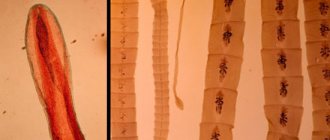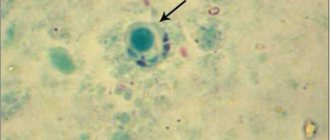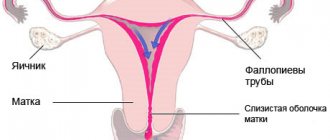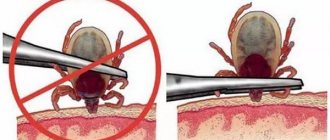| Kingdom | Animals |
| Sub-kingdom | Multicellular |
| Type | Roundworms |
| Class | Nematodes |
This type of animal combines spindle-shaped worms: their body is round in cross-section, pointed at both ends and is not divided into segments. Their length is usually a few millimeters, rarely reaching a meter. They all look alike. This is one of the types that have achieved the greatest success in the animal kingdom!
Roundworms inhabit every imaginable habitat. They are found at the bottom of the seas from the North Pole to Antarctica, populating fresh water bodies and soil. There is no group of organisms that are not parasitized by roundworms. Their numbers are enormous, especially in bottom silt and soil. The diversity of representatives of the type is estimated by scientists at a million species, including those that have not yet been described.
Roundworms are a group of worms that have an elongated, non-segmented body, round in cross-section, a primary cavity filled with liquid (in which internal organs are located) and not connected with the external environment. In their body they have a through intestinal tube that ends in the anus.
What is roundworm?
The first step is to answer this question. One of the largest roundworms that live in the human intestines, according to medical terminology, is called human roundworm.
Despite the fact that this parasite is found very often in the human body, only a few have any information about it. Most people know the human roundworm from a photo from a school biology textbook, nothing more.
You may be interested in:A biopsy is a procedure for removing cells or tissue from the body for diagnostic or research purposes. Indications, preparation and results of biopsy
The parasite is found in inhabitants of almost the entire globe, somewhere more, somewhere less. However, there are countries in which roundworms are present in the body of almost 100% of the population. This includes, for example, Japan. Often the number of worms in the human intestine is small. However, there are cases when their number reached up to a thousand.
Roundworms cause significant harm to the host's body. It can be local or general. The first of these includes pain in the abdomen, lack of appetite, etc. General is characterized by all the consequences that arise from the toxins secreted by worms into the human intestines.
You may be interested in: Worms: symptoms, treatment with medications and folk remedies
Roundworms are very dangerous for children. In a child’s body, they can move not only through the intestines, but also rise through the stomach through the esophagus into the pharynx. From there, they either exit the body through the mouth and nose, or travel into the respiratory tract, which can lead to suffocation.
The difference between human roundworms and other helminths is the absence of organs with which they attach to the intestinal walls. For this reason, parasites are able to move independently to food. This feature explains that they often live in the small intestine.
Symptoms of ascariasis in humans
In most cases, ascariasis first causes a feeling of chronic fatigue.
Ascariasis is characterized by the appearance of signs of invasion in a short period of time. The first typical symptom is often malaise. The weakening of the body caused by the vital activity of parasites is similar to the first signs of a cold. The affected organs begin to perform their functions poorly. Parasitic manifestations that are characteristic of invasion look like severe intoxication and allergic rashes. The main symptoms signaling ascariasis:
- the skin becomes pale;
- lack of appetite;
- problems with stool;
- sudden weight loss;
- labored breathing;
- pain in the abdominal area;
- nausea after eating;
- exposure to ARVI;
- respiratory tract diseases;
- temperature increase;
- sweating;
- depression;
- allergic manifestations;
- chronic fatigue.
Anatomy of roundworm
The lengths of female and male individuals differ significantly (40 and 15 cm, respectively). In addition, another difference is their morphology. The male representative has a posterior end curved towards the peritoneal wall.
The body of the human roundworm is spindle-shaped, elongated, light pink or pale light in color. Sometimes translucent or grayish individuals are found. The parasite has three lips that surround the mouth opening.
Roundworms, which belong to nematodes and roundworms, are characterized by the following structural features:
- Organisms are dioecious. Both female and male individuals are present.
- Their body contains smooth striated muscle tissue.
- The outside of the body is covered with a multilayer cuticle. Acting as an exoskeleton, it helps the parasite bend its body.
- The body has a primary cavity and no secondary cavity.
- The circulatory and respiratory organs are atrophied.
- The nervous system is fully formed and is represented by nerve trunks that extend from the pharynx ring.
You may be interested in: Ultrasound in gynecology: how to prepare, on what day of the cycle to do it?
The human roundworm body includes:
- Body cavity;
- Epithelial cover and muscles;
- Digestion;
- Nervous system;
- Respiratory system;
- Excretory system;
- Reproductive system.
How is helminthic infestation diagnosed?
Since any organ can be the habitat of the parasite, it is sometimes very difficult to detect. The patient is prescribed the following types of research:
- blood tests;
- Analysis of urine;
- sputum examination;
- stool analysis;
- Ultrasound of internal organs;
- radiography.
To identify parasites, you need to take several tests
Loading …
Blood tests help detect the presence of antibodies to the parasite. This study also helps to determine the number of leukocytes, which become more numerous during the course of helminthic infestation.
Sputum analysis gives a proper picture only at the pulmonary stage of development of the parasite.
Examination of stool makes it possible to identify the parasite only if it is localized in the intestines and is a sexually mature individual.
A urine test can only indirectly confirm the presence of parasites.
A chest x-ray is performed if larvae are suspected to be localized in the lungs.
Ultrasound is prescribed for the purpose of differential diagnosis, to exclude other pathologies.
Body cavity
The body of the roundworm has an oblong shape, tapering at both ends. In cross section it is round, and in the cavity there is a colorless liquid.
As described above, the internal cavity of the parasite’s body is primary. This means that the internal organs are not separated from the body wall by an additional layer of epithelium. A special feature is the presence of a closed space in the body of the worm, in which the digestive and reproductive organs are located.
The functions of the cover include:
- Support. Functioning as an exoskeleton, it forms a shell for internal organs and fluid.
- Transporting vital substances from the digestive system to all others.
- Movement of waste products into the excretory organs.
Thanks to the external aquatic skeleton, the body of the roundworm is protected from the effects of the human body (digestion with the help of gastrointestinal enzymes). This skeleton is involved in metabolism and performs the task of the circulatory system.
How to remove roundworm from the body?
Due to the widespread distribution of these parasites and their danger to humans, doctors are faced with the question of timely diagnosis of helminths and their removal. Classical therapy involves deworming with chemicals, but they cannot be taken in long courses. As a result, the chemicals only affect adult worms, while the roundworm larvae, which are no less dangerous to humans, remain viable.
Effective deworming must be comprehensive. Antiparasitic drugs from NPK Optisalt, created exclusively from natural ingredients, can be taken in long courses, the duration of which is sufficient to remove from the body not only adult roundworms, but also their larvae, as well as eggs. In addition, the Optisalt complex eliminates the harm caused to the human body by helminthic infestation: it removes waste products of the worm, improves the functioning of the gastrointestinal tract, and replenishes reserves of microelements. You can read in detail about how and how to treat roundworms in our article about ascariasis, published on the website.
Epithelial cover and muscles
The epithelial cells of the human roundworm form the outer multilayered cuticle, also called the hypodermis. It consists of ten layers. It is the hypodermis that produces a substance that prevents the digestion of helminths by intestinal enzymes. On a cross-section of the helminth, it looks like a thin-walled shell covering it entirely.
The peculiarity of the hypodermis is that, despite its strength, it is very flexible. This allows the roundworm to actively move. There are four ridges on the cuticle. They are located on the sides, on the back and peritoneum. The ridges contain excretory organs that have the shape of canals. Each of them is a depression separating the hypodermis and the muscular frame.
Muscle consists of longitudinal fibers. These fibers, together with the epithelium, make up the lining of the body cavity of the roundworm and form the body wall.
This feature of the integument facilitates the active movement of parasites, but the muscular frame, which differs from the frames of other roundworms, does not allow them to move in a straight line.
Digestion
You may be interested in: Zirconium bracelet: medicinal properties, benefits and harms, reviews
The digestive system of the human roundworm consists of a hollow tube that forms an intestine with four sections. Two of them are formed from ectoderm and two are of endodermal origin.
The intestine is a closed and tortuous cavity, which is located in the central part and passes through the entire body of the helminth. All nutrients are absorbed in the midgut.
Such a simple anatomy of the digestive system of the human roundworm is due to the fact that the parasite is constantly surrounded by food mass processed by the human intestine. This greatly simplifies the feeding mechanism for him.
The process of absorption of food occurs through the opening of the mouth, surrounded by the so-called lips.
Localization of the parasite and corresponding signs
Roundworms settled in the intestines, pancreas or liver can cause the following symptoms:
- increased or worsened appetite;
- weight loss;
- stool disorder;
- feeling of nausea;
- pain in the epigastrium and intestines;
- heavy salivation;
- general poor health;
- the occurrence of allergic reactions.
Cough is one of the symptoms of lung helminthiasis
When parasites live in a woman’s vagina, symptoms such as itching, burning, copious mucous discharge, irritation and redness of the external genitalia are observed. Worms penetrate the reproductive system by migrating through the intestinal wall. Parasites can also crawl from the intestines into the vagina at night.
If localized in the bronchi, helminths cause a dry cough and suffocation.
When localized in the brain, a person experiences sharp headaches similar to migraines, convulsions, loss of consciousness may occur, etc. Roundworms also migrate to the central nervous system organ through the bloodstream.
If the parasite has settled under the skin, as a result of its further development, the patient discovers redness of the integument in the affected area. In this case, with the naked eye you can see a winding cord that protrudes. The skin becomes swollen, and the infected person experiences itching and pain. Most often, the parasite must be surgically removed.
If the larvae get into the eyeball area, it is dangerous because the parasite can lead to a violation of its integrity and cause a number of local diseases, including loss of vision.
Nervous system
Its structure is also primitive. The nervous system of the parasite consists of one ganglion node represented by a peripharyngeal ring. It is located in the head part of the helminth. Dorsal and abdominal nerve bundles extend from it along the body. Their functions include organizing muscular control during movement and the presence of sensitivity.
Roundworms have practically no receptors. There are only papillomas, which are tactile bumps. They are located near the oral cavity.
Parasites also have no other sensitive formations. They have atrophied because the digestive environment of the human intestine does not contain any physical irritants.
Drugs used for ascariasis
The following anthelmintic drugs will relieve the patient from roundworms:
- Albendazole;
- Dekaris;
- Vermox;
- Helminthox;
- Wormil.
Treatment differs between adults and children, often due to excessive toxicity of drug components. Children are most often prescribed decaris, pyrantel and vormil.
Respiratory system
Worms live in an anaerobic environment. Where there is no free oxygen. Therefore, they do not need the respiratory organs present in individuals that are more developed. Their lack of a respiratory system is the result of a natural adaptation, since there is no air in the human intestines.
Metabolic processes occur due to cellular respiration. It is carried out as a result of glycolysis in the cell cytoplasm. This type of cellular respiration, in which there is no oxygen, is used by anaerobic organisms.
Where do the parasite larvae live?
Once in the gastrointestinal tract, the eggs are transported to the intestines, where they remain until they turn into larvae.
Roundworms are often found in the lungs
Having reached the larval stage of development, the parasites migrate through the lymphatic system to the bile ducts, liver, lungs or even the heart.
During this period, a person may experience symptoms such as cough, pain in the right hypochondrium, nausea, and suffocation. The larvae can enter the liver and heart by accident; their target is the respiratory system.
After penetrating the respiratory organs, they cause a person to have a severe coughing attack, after which they migrate to the oral cavity, from where they again penetrate the digestive tract when a person swallows saliva.
Sometimes the parasite larvae can linger in the blood, where they most often die.
Life cycle of human roundworm
Adult helminths choose the lumen of the small intestine as their habitat. The human roundworm completes its entire cycle in two years, after which it is eliminated from the host’s body during defecation.
Helminth eggs leave the human body in the same way. In the case when only a female lives in the human intestines during the period of infection with the parasite, her eggs will be infertile. If it’s only a male, there won’t be any at all.
Layed roundworm eggs, even if they are fertilized by a male individual, are not initially a threat to humans, since they are immature and non-infectious.
Before they begin to pose a danger to the host, a larva must develop in them. This will provide a warm and moist intestinal environment. The development period is about two weeks. At this time, the embryo goes through four stages: morula, gastrula, tadpole and larva. After which the egg must be absorbed by the future owner. This usually occurs when contaminated food or water is consumed.
The life cycle of the human roundworm in the host body is conventionally divided into two global stages - migratory and intestinal.
Reproduction
A female roundworm can lay more than 200 thousand eggs in just one day.
The reproductive organs are very well adapted for maximum reproduction of offspring. Helminths have a special type of relationship, thanks to which one individual reproduces once a day, laying several hundred thousand eggs. The female has 2 ovaries and 2 uteri, and the male is endowed with a long testis. The eggs laid by the females are released along with feces and a new life cycle of the human roundworm begins. The reproduction of roundworms depends on the characteristics of the human body.
Migration stage
After the roundworm larva finds itself in the lumen of the human intestine, it sheds its protective shell, under which its length is already 0.2 mm.
Getting rid of it occurs thanks to the parasite’s own enzymes, which are able to dissolve the outer coating of the larva. Using a hook-shaped appendage present on the body, the helminth attaches itself to the intestinal lining, and then makes a puncture on it and ends up in the bloodstream. In addition, as a result of numerous studies, it was revealed that the migration of the larva is facilitated by the release of enzymes that dissolve the membranes of blood vessels.
As a result of the penetration of parasites into the blood, they spread throughout the body. The first organ to which roundworms move is the liver. Then the target becomes the heart. Once in the heart, they migrate through the pulmonary circulation and reach the lungs. In order to fully mature, the larvae need oxygen. This is typical only for larvae, since it kills adults.
Once in the alveoli of the lungs, the larvae remain there for almost two weeks. In this space their final maturation occurs.
Parasites emerge from the alveoli already 1.4 mm long. Further, crossing the ciliated epithelium lining the respiratory tract, human roundworms, bypassing the bronchi and trachea, reach the larynx to be swallowed again. As parasites migrate through the respiratory tract, a person may experience a cough. This is the result of irritation of the respiratory organs.
Having traveled this entire path, the parasite larvae again end up in the small intestine. Here they will grow to reach adult size.
Such a complex system of movement of helminths is an integral part of their life processes. The migration of roundworms lasts 14-15 days.
Treatment of infestation
Drug therapy is carried out under the supervision of a doctor.
After confirming the diagnosis, the doctor prescribes treatment. How long the treatment will last, which drugs are best to use and what dosage to use will be prescribed by the doctor, based on the clinical picture of the disease. It must be taken into account that if roundworm is detected in a person’s body, the whole family must undergo therapy. To get rid of parasites, the following drugs are used:
- "Vormil";
- "Vermox";
- "Dekaris."
About 24 hours after taking these drugs, you need to take a laxative so that the dead biohelminths leave the body and do not lead to general intoxication with decomposition products. Herbal medicine has been successfully used to combat worms. An excellent anthelmintic is the herbal mixture from which a decoction is made. It includes the following plants:
- St. John's wort;
- wild rosemary;
- strawberry leaves;
- lovage stems;
- common elecampane.
Mix equal parts of herbs, pour 1 tablespoon of the mixture with boiling water (250 grams). Cook for 15 minutes. Leave for several hours. Take 100 grams in the morning and evening, for children - 50 grams. During and after treatment, nutritious nutrition is very important in recovery. The patient should adhere to a light and nutritious diet.
Intestinal stage
It’s also worth talking about it briefly. This stage of development of human roundworm is characterized by the final maturation of the larvae and their development to the size of an adult. Moreover, these dimensions are quite impressive:
You may be interested in:Hypocholesterol diet for a week - recipes, menus and reviews
Having reached maturity, roundworms begin to mate and lay eggs in the human intestine. This can last up to 1.5 years.
The reason for prolonged infection by parasites is constant self-infection, since they cannot reproduce inside the host. Therefore, a person can be a carrier of parasites for more than one year.
The duration of the period from the entry of a helminth egg into the human body until the female’s first clutch is, on average, 80 days.
At the initial stage of development, the human roundworm feeds on human blood serum. As it grows, the parasite's preferences change, and it begins to feed on red blood cells from human blood.
Most people are of the opinion that, having gone through its entire life cycle, the human roundworm independently leaves the human body. This opinion is wrong.
The ability of helminths to move freely through the host’s organs determines their spread throughout the body. That is why the occurrence of inflammatory processes in the heart, lungs and gastrointestinal tract is not accidental. The main clinical manifestations of ascariasis (infection with roundworms) are the presence of myocarditis, pneumonia, bronchitis, jaundice and bleeding in the gastrointestinal tract.
Kinds
The Nematoda class includes more than 24 thousand species of parasitic varieties of roundworms. Scientists have developed a special table, which includes the most common types of parasites living in the human body. Among the roundworms, the most famous are roundworms and pinworms. The helminths Guinea worm and hookworm often infect people, which are slightly less common than pinworms and roundworms. Pinworm worms are also a type of roundworm, but they differ in that they exist in the human body for a long time without causing obvious signs of disease.
Methods of infection with roundworms
If you know the ways of infection with human roundworm, you can significantly protect yourself. However, it is impossible to completely reduce the risk of infection to zero. The reason for this is that mosquitoes, flies and other insects can carry the parasite larvae. Even cultivating the soil on your site does not guarantee that infection will not occur.
Infection with human roundworm is possible in the following main ways:
For children, roundworm infection is especially dangerous. If one child is infected, there is a high risk of infecting others through contact. Therefore, having discovered ascariasis in one of the family members, everyone else needs to be examined for the presence of parasites. In almost all cases, the whole family is treated for ascariasis.
Symptoms may not appear immediately after infection. Often, the carrier of human roundworm is not aware of his infection. That is why, when undergoing an annual medical examination, everyone is recommended to be tested for helminth infection.
Diagnostics
Modern laboratory tests accurately determine the type of parasite.
Blood test for antibodies When starting a diagnosis, one must take into account that it is much more difficult to detect larvae in the migration stage. Differential analysis will be very important in such cases. After the research, the difference between ascariasis and other helminth infections will be obvious. Several types of research are carried out:
- hematological;
- immunological;
- X-ray.
During diagnosis, migrating roundworm larvae are detected during lung sputum tests. A blood test shows the presence of eosinophils, and an eosinophilic infiltrate is detected in the respiratory organs. Often the diagnosis is based on the analysis of stool, which contains eggs of human roundworms. The most reliable method is considered to be vegetative resonance diagnostics, with the help of which the specific type of helminth and the place where it parasitizes is determined.
A parasitic infection caused by roundworms can be completely cured without complications or consequences for human health.
Is it possible to become infected with worms from cats?
When interacting with soil, sand, grass and other animals, cats can become carriers of human roundworm eggs. They will pass to a person through direct contact with the cat. A person, having played with a cat or simply stroked it, has no idea that the pet has “rewarded” him with parasite eggs.
Prevention is to wash your hands after every contact with cats. But often people forget about the importance of this procedure. Therefore, infection with helminths from cats occurs quite often.
Complications due to ascariasis
Worm infestation can cause a variety of complications depending on where the parasites are located.
Helminths that affect the gastrointestinal tract or liver can cause the following complications:
- appendicitis;
- pancreatitis;
- liver abscess;
- intestinal obstruction;
- irritable bowel syndrome;
- cholangitis.
Appendicitis occurs when parasites migrate into the appendix. The pathology is manifested by sharp and intense pain in the right area of the abdomen and sometimes an increase in temperature. Without modern medical care, the condition can be fatal.
Pancreatitis occurs when worms penetrate the pancreas. The condition threatens the occurrence of pancreatic necrosis. In this case, the patient experiences severe pain in the epigastric region, and vomiting is also possible.
Helminths can cause serious gastrointestinal diseases
A liver abscess is formed as a result of a long retention of the helminth in this gland.
Intestinal obstruction occurs when there is a multiple population of parasites in the intestine, which clog its lumen and prevent the passage of feces.
Irritable bowel syndrome is manifested by indigestion, abdominal pain, broken bowel movements and excessive flatulence. This is due to the fact that roundworms infect the mucous membrane of the digestive organ and cause inflammatory processes.
Cholangitis occurs when roundworms are localized in the bile ducts. Against the background of this condition, jaundice and a purulent process in the biliary tract often develop. The main symptoms of developing pathology are a sharp increase in temperature and sharp pain in the area of the right hypochondrium.
When the heart is damaged against the background of ischemia, a person may develop myocardial infarction, which often leads to death.
If roundworms are localized in the lungs, the infected person develops bronchitis, pneumonia or bronchial asthma.
Parasites in the brain lead to the development of migraines and meningoencephalitis, which threatens the patient with paralysis.
Fish and roundworms
Infection with human roundworm through fish is also possible. The eggs of worms enter the body of these creatures with various river mollusks from the same contaminated water. In this case, the fish turns out to be only an intermediate carrier of helminths, since it itself does not suffer from worms.
You can become infected with roundworms from this creature by eating poorly processed meat or caviar. If you eat infected fish raw (sushi), the probability of infection reaches almost 100%. Even dried fish remains a carrier of roundworm eggs.
Re-infection
Since the human body does not develop the necessary defenses to prevent infection, a person who has once had ascariasis can be re-infected.
Despite this, the use of medications for ascariasis for preventive purposes is not recommended. The reason for this is the drugs themselves. Ascariasis is treated with very powerful drugs. And preventative medications do not provide the desired result. The worms will not die from them and will not be eliminated naturally, but will begin to climb up the intestines. The consequence may be the release of parasites through the mouth, nose and ears, which causes significant discomfort to the patient.
Source
What is a parasite
Ascaris belongs to a group of large parasitic worms of the class of nematodes, the size of which can reach several tens of centimeters. It is known that the largest ones can grow up to half a meter in length. These worms are dioecious, unlike some other types of parasitic worms.
Infection with helminthiasis most often occurs in the spring, summer and autumn months. Children under seven years of age are more susceptible to parasitic diseases due to an undeveloped immune system and lack of personal hygiene.










